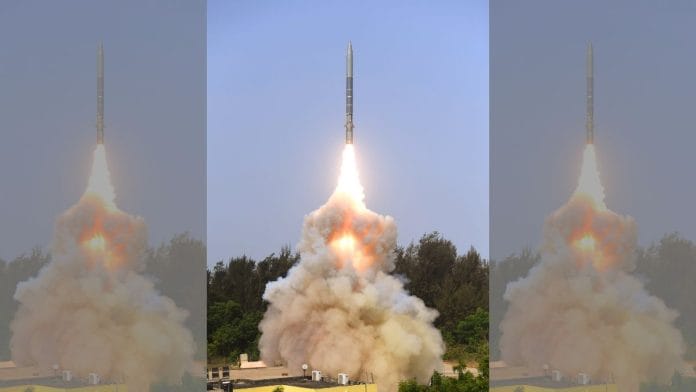New Delhi: In a significant development, the Defence Research and Development Organisation (DRDO) Wednesday tested the Supersonic Missile-Assisted Release of Torpedo (SMART) system that is meant to strike enemy submarines over 500 km away.
The game-changer project, initiated by the DRDO in 2018 from its own budget, is meant for the Indian Navy.
SMART will come into play when a satellite or a non-combat intelligence, surveillance and reconnaissance system like unmanned aerial vehicles, detects an enemy submarine but a combat asset to strike it may not be nearby.
Currently, the Navy can launch torpedoes from a submarine, ship or helicopters but these have limited speed and a range of only 20 to 40 km.
Sources in the defence and security establishment told ThePrint that SMART was still in the developmental stage and would undergo several more trials.
What makes up SMART?
This canister-based missile system consists of several advanced sub-systems, namely two-stage solid propulsion system, electromechanical actuator system, and precision inertial navigation system among others.
The system carries an advanced light-weight torpedo as payload along with a parachute-based release mechanism.
The torpedo for SMART is the indigenous Torpedo Advanced Light (TAL), an electrically-propelled self-homing torpedo developed by the DRDO. It has both active and passive modes of operation, and all-digital control and guidance systems.
The defence ministry said that SMART was launched from a ground-mobile launcher. Several mechanisms such as symmetric separation, ejection and velocity control have been validated in this test, it added.
The other known country to have such a mechanism is Russia, sources said.
They added the next stage of tests would involve firing SMART from surface ships and subsequently the torpedo would be validated to strike a submarine or an undersea object.
Asked when SMART would be inducted into the Indian military, sources said that integration on board a ship should happen over the next year and a half. They said the Navy would first carry out its own trials before going ahead with any kind of order because this was a DRDO-funded project and not something the Navy had asked for.
However, it did ask for longer-range torpedoes.
Another set of sources explained that while a missile covering a particular distance was one part, the crucial part would be how the torpedo function once it was separated from the missile and fell into the water.
“The torpedo needs to be powered. While the missile will be supersonic, the torpedo cannot achieve that speed because of water elements. But we are told it will be faster than the regular speed of torpedoes which is about 28-30 knots,” a source said.
Asked how the torpedo would be able to power itself once it hits the waters, a source said the technology was already prevalent through anti-submarine warfare aircraft, helicopters and drones which carried their own arsenal.
How will SMART function?
SMART will take off like any other supersonic missile from a warship or a truck-based coastal battery. Most of its flight in the air will be through lower altitudes with sea skimming capabilities and will have a two-way data link from the warship or an anti-submarine warfare aircraft, helicopter, drone or even satellite.
Based on the movement of the enemy submarine, the missile will be able to course correct till it reaches near the vessel. When close to the enemy submarine, the missile will eject the torpedo into the water which would then start moving towards the target.
(Edited by Tikli Basu)
Also read: What is ‘ROCKS’, India’s first air-launched quasi-ballistic missile






